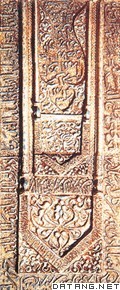1) the folks calligraphy


民间书法
1.
cul-ture disillusion,Chinese calligraphy realm, and the thinking people to afresh pay attention to the folks calligraphy, is a ci-vilian s consciousnessing too will be in the lead to change into the folks calligraphy and classic calligraphy fiom the clas-sic calligraphy each show t.
当今书坛,民间书法倍受关注。
2) non-governmental printing


民间刻书
1.
The early and middle Qing dynasty saw the prime time of non-governmental printings with the formation of four printing centers of Jiangsu,Zhejiang,Anhui,and Beijing.
清代中前期是我国民间刻书的巅峰时期,形成了以江苏、浙江、安徽和北京为代表的四大刻书中心。
3) folk collections of books


民间藏书
4) civilian transcription


民间抄书
1.
The research about civilian transcription has not been adequate attached importance to.


民间抄书在中国古代图书流通文化研究中尚属不足 ,但它却是不可忽视的一个方面 ,有其特殊的意义。
5) unofficial documents


民间文书
1.
In this background, a large number of unofficial documents have appeared and kept.


明、清,直至民国期间,清水江流域下游形成了以人工林种植与采运为主的贸易体系,产生并保存下了以林业契约为主,数量巨大的民间文书,是为清水江文书。
6) nongovernmental academy


民间书院
1.
The internal developmental environment was that Jiangxi\'s economy rapidly developed,the local intelligentsia rose and actively participated in the nongovernmental academy affairs so as to realize their life pursuit.
统治者重教兴文,印刷术普及等是宋代江西民间书院兴起的外部环境;江右经济飞速发展,地方知识阶层渐起并积极参与地方事务乃其内部动因。
补充资料:阿拉伯书法
| 阿拉伯书法 Arabian calligraphy 伊斯兰时代的阿拉伯文字书写艺术。起源于手抄本的《古兰经》。阿拉伯书法具有悠久的历史,而且字体繁多。一般认为,11世纪是划分阿拉伯书法时期的界线,之前为古体时期,之后为新体时期。古体时期的阿拉伯书法以库菲体出现最早,其书法笔画纵向,线条直而棱角分明,有一定装饰味。9~10世纪又一分为二,出现了叶状库菲体和花状库菲体,皆因笔画末端似棕叶状和饰有花头纹而得名。另外,还有一种繁琐而规范的手写体及印刷体,以结体工整圆润,笔画舒展流畅为其特征,有纳斯黑体和斯尔希体等不同字体。11世纪之后,在古体书法继续流行的同时,又相继出现了4种新的字体,即:①穆哈卡克体,风格清秀,笔画纤瘦;②拉伊哈尼体,风格活泼奔放,笔画末端呈鼠尾状;③鲁库阿体,用于书信的书写及手抄本通俗读物;④塔乌奇体,风格庄重大方。另外,还有一些字体流行,如:马格里比体,以活泼潇洒,节奏分明著称;纳斯塔里克体,笔画更加纤细流畅;希卡斯塔体,笔画比较繁琐;加里体,用于公文书写,以及专门用于苏丹签名,形如装饰绘画的图画文字的花字体。阿拉伯书法非常重视文字本身的形式美,因此其书法讲究节奏感、装饰性和纹样。由于是用硬笔在羊皮纸上自右而左横向书写,所以笔画简洁流畅,具有一种曲线的效果。
|
说明:补充资料仅用于学习参考,请勿用于其它任何用途。
参考词条
